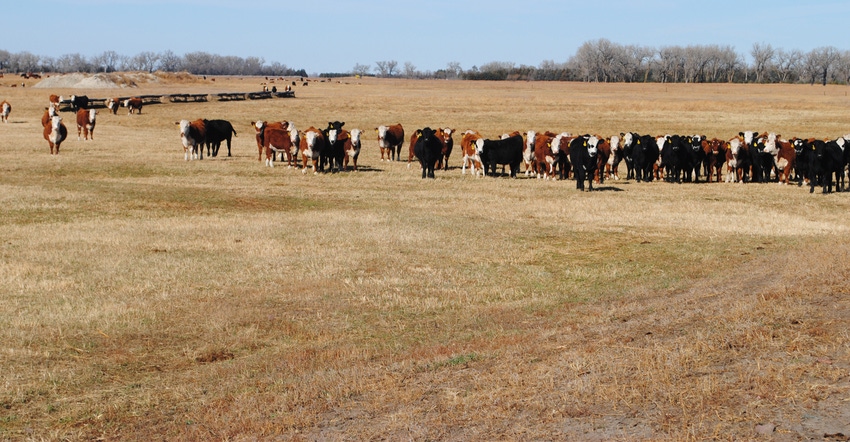January 8, 2019

By Travis Mulliniks
Developing a heifer to replace a cull cow is one of the most expensive management decisions for cow-calf producers, leading to major implications on long-term herd profitability.
When the decision to develop heifers has been made, the question becomes: What is the proper strategy to develop replacements for the cow herd? Traditional recommendations suggest heifers should be managed to reach 65% of their mature body weight at breeding to maximize pregnancy rate.
In the past several years, multiple studies across differing environmental conditions have proved heifers can be developed to as low as 48% to 50% of mature body weight with no negative effect on pregnancy rates. Heifers in these systems are developed at a restricted gain (less than 0.75 pounds per day of gain), while utilizing a compensatory gain or increased gain period at the time of breeding.
For cow-calf operations, maximizing outputs does not necessarily result in maximizing profit. Sometimes the "proper" way to develop heifers disregards her net present value and ability to pay her investment cost off. Just like any capital investment, retained or purchased heifers only are worth the sum of all the income over their lifetime, including salvage value minus production costs of that occurred during development.
A recent study, Profitability of Developing Beef Heifers on Stockpiled Winter Forages, published in the Journal of Applied Farm Economics, compared developing heifers on a low-input, forage-based system with a high-input, drylot system and the effect on profitability of the system over an 11-year lifespan.
Heifer replacement rate and cow costs were held constant across the heifer development systems. The net present value of heifers developed on a low-input, forage-based system ranged from $264 to $468 per head. Heifers developed in a drylot system had a net present value of negative $876 per head and were developed to reach 65% of their mature body weight.
The breakeven period to pay off heifer development costs was estimated in years of age, and heifers in forage-based systems became profitable at 3 to 4 years old, while heifers developed in a drylot were 9 to 10 years old before their investment cost was covered.
In this study, developing heifers in a high-input system increased production risks and decreased long-term profitability. Since cow costs and replacement rates were the same in this study, the only thing that differed was investment or development costs. Low-input heifer development decreased costs and increased opportunity, which extensive research has indicated will not sacrifice reproductive performance.
With that in mind, when we think about heifer development, we may want to consider more than maximizing pregnancy rates — but also increasing the net present value or general value of that heifer. Low-input, cost-effective heifer systems allow for increased flexibility of marketing.
In a production system, heifer programs essentially are a stocker operation with multiple end marketing or target options. Pregnant heifers can be kept as replacements or sold, while nonpregnant heifers are young enough to be fed for the choice beef market or kept as yearlings.
Another advantage to low-cost heifer development systems is increased longevity within the cow herd. Profitability and longevity in the cow herd are directly tied to each other. Research from New Mexico and Montana indicates that 30% to 60% of heifers remain in the herd after age 5.
In addition, high-input development systems tend to decrease longevity in rangeland production settings. In most cow herds, this is largely because of the highest nonpregnant rate occurring in young, 2-and 3-year-old females that are asked to get pregnant, while lactating for the first or second time, and still growing themselves. Cost-effective, low-input heifer development systems help identify sub-fertile heifers early that need additional nutrient resources to make it as a cow and lack the ability to sustain reproductive function under limited nutritional environments.
Heifer development should be focused on increasing long-term profitability of the cowherd and creating value of the heifer rather than focusing on high yearling pregnancy rates or achieving certain percentage of body weight.
Mulliniks is a Nebraska Extension range beef nutritionist.
This report comes from UNL BeefWatch.
You May Also Like




